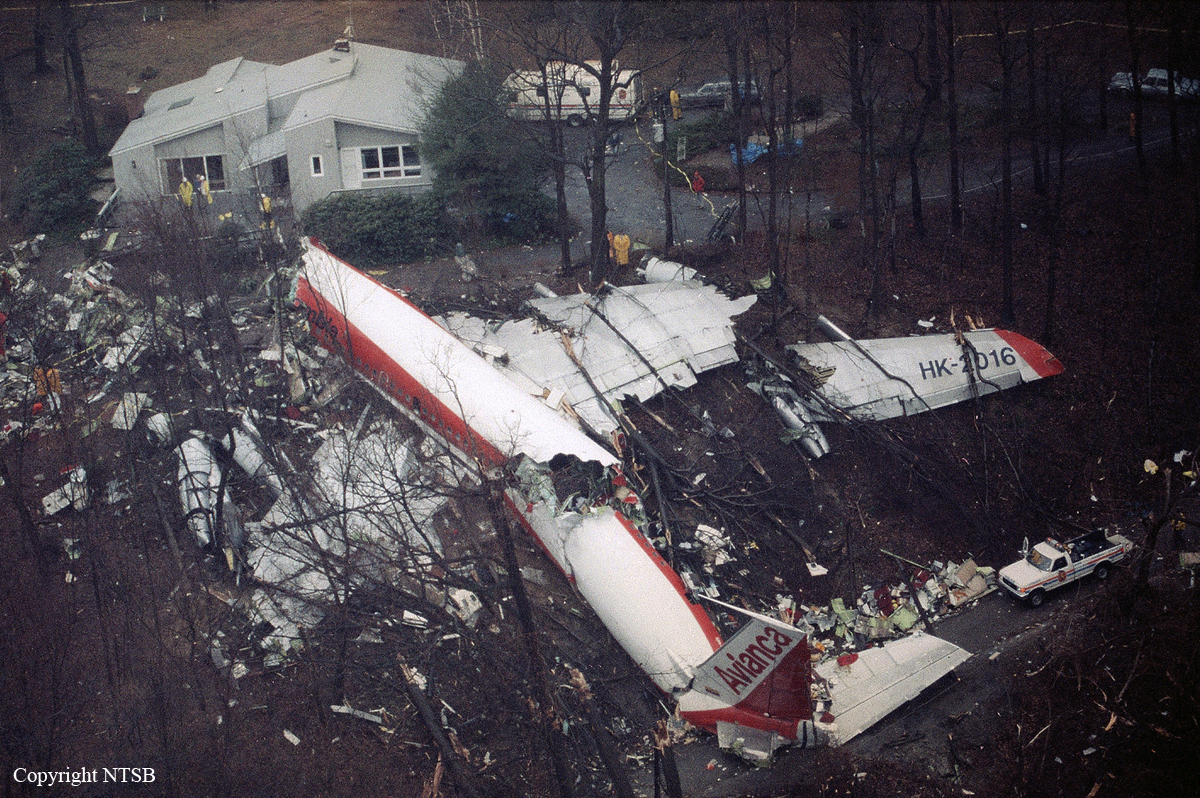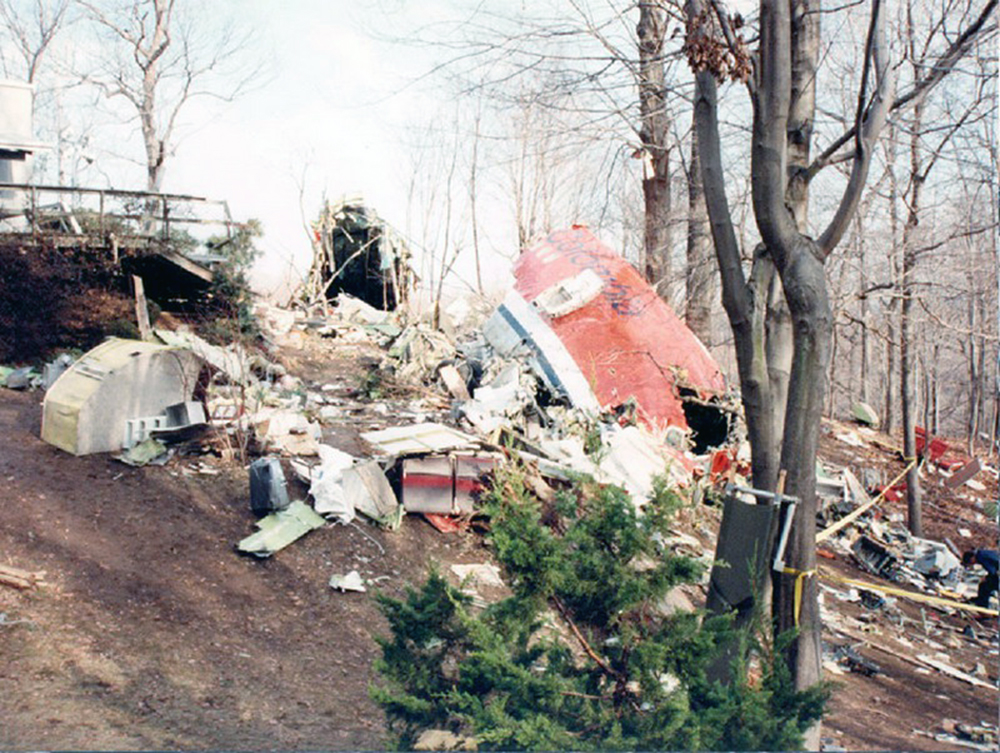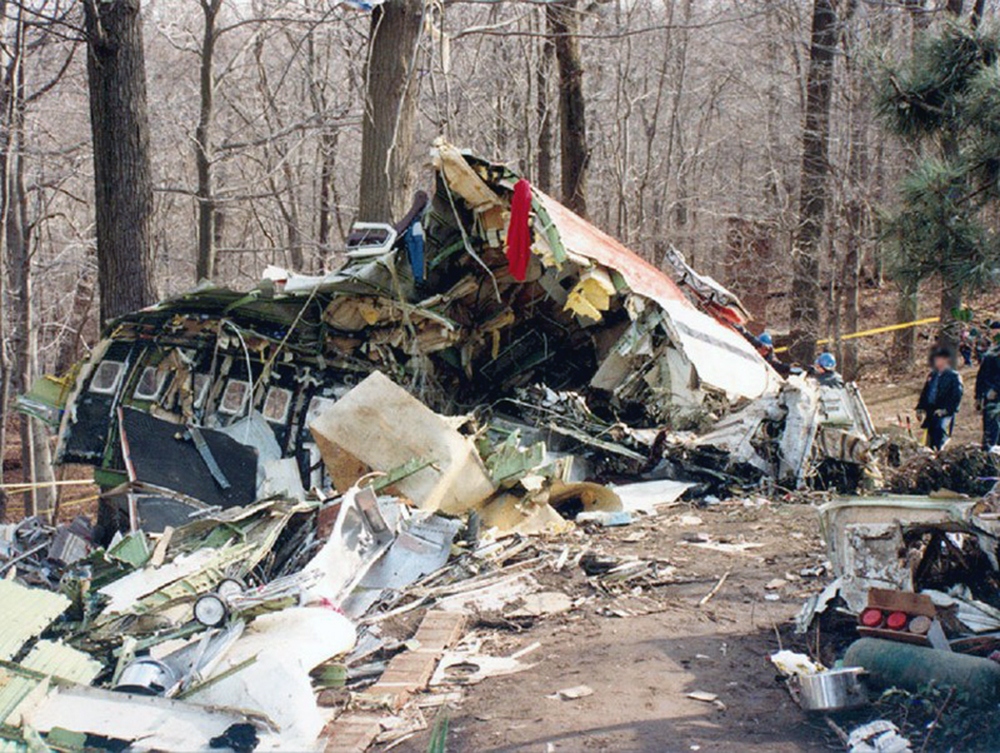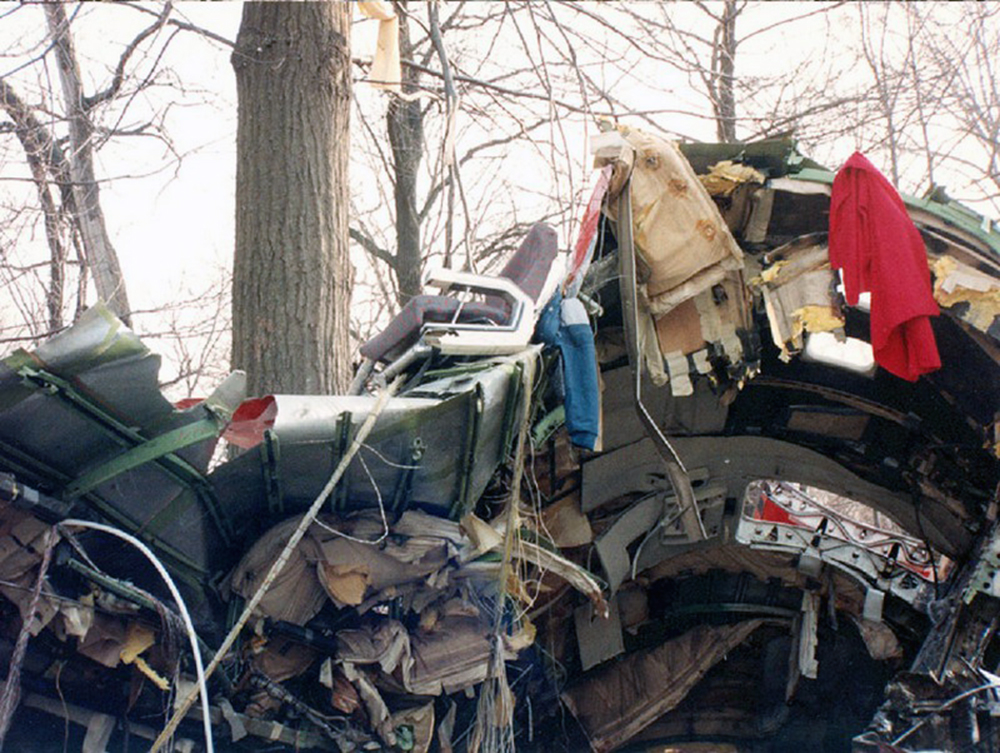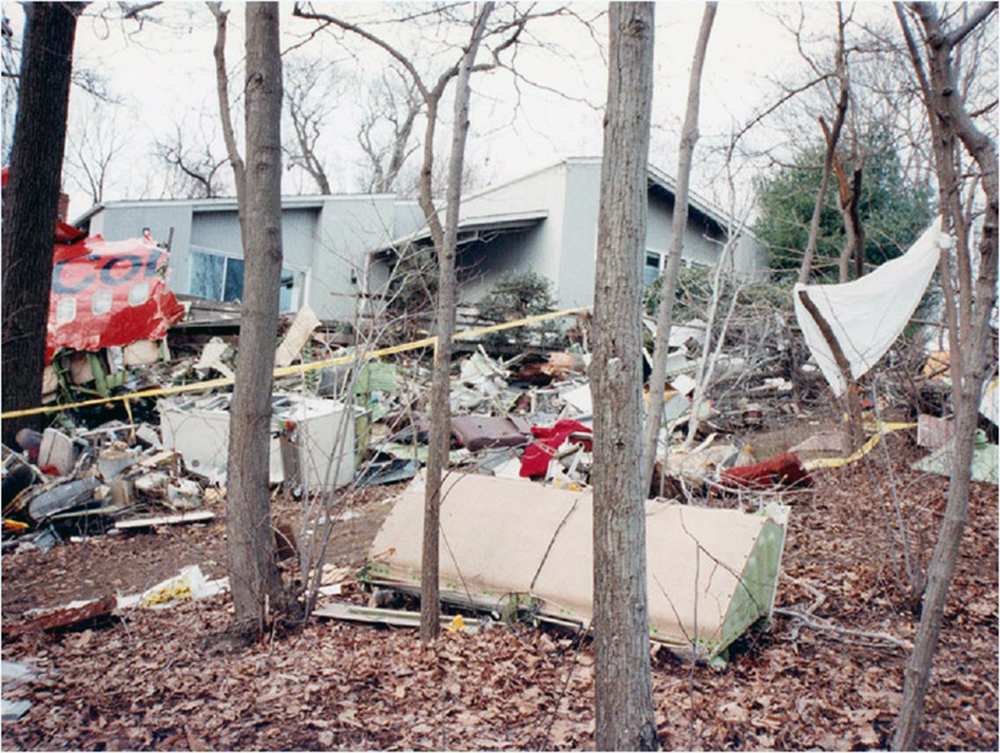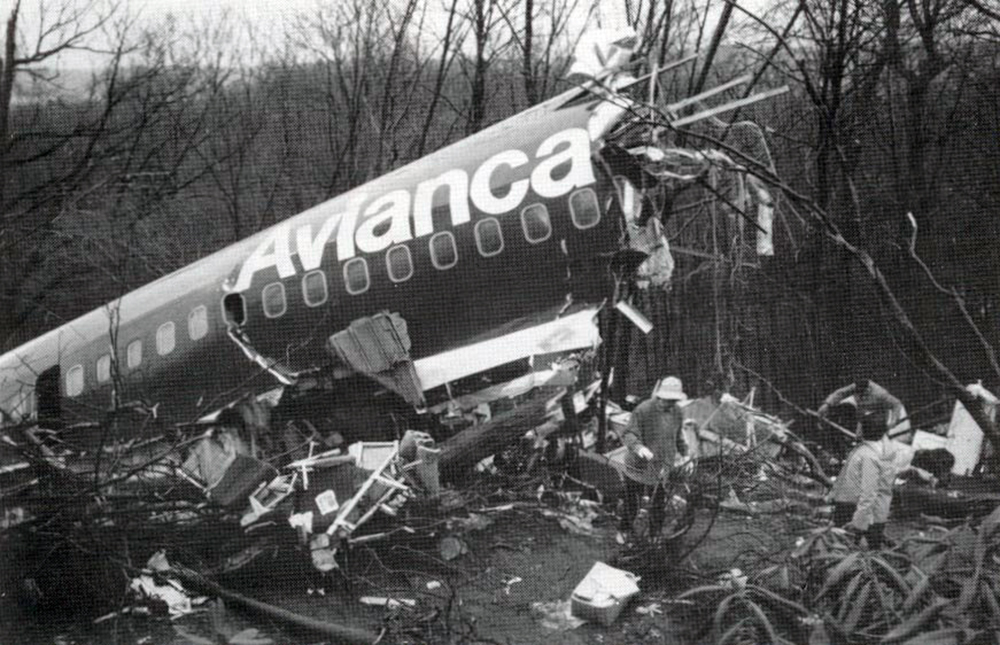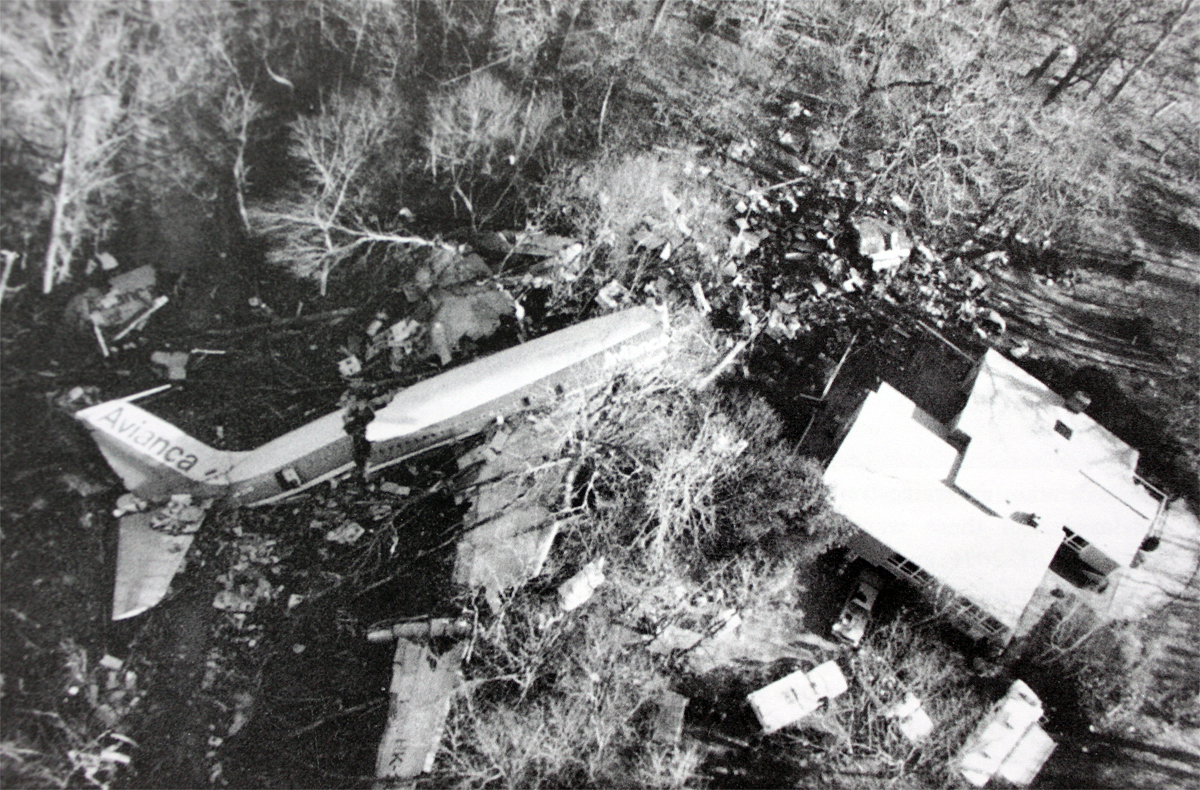Zone
Crash of a Boeing 747-136 in New York
Date & Time:
Dec 20, 1995 at 1136 LT
Registration:
N605FF
Survivors:
Yes
Schedule:
New York - Miami
MSN:
20271
YOM:
1971
Flight number:
FF041
Crew on board:
17
Crew fatalities:
Pax on board:
451
Pax fatalities:
Other fatalities:
Total fatalities:
0
Captain / Total hours on type:
2905.00
Copilot / Total hours on type:
4804
Aircraft flight hours:
90456
Aircraft flight cycles:
17726
Circumstances:
The captain initiated a takeoff on runway 04L, which was covered with patches of ice and snow. The wind was from 330 degrees at 11 knots. Before receiving an 80-knot call from the 1st officer, the airplane began to veer to the left. Subsequently, it went off the left side of the runway and collided with signs and an electric transformer. Investigation revealed evidence that the captain had overcontrolled the nosewheel steering through the tiller, then applied insufficient or untimely right rudder inputs to effect a recovery. The captain abandoned an attempt to reject the takeoff, at least temporarily, by restoring forward thrust before the airplane departed the runway. The current Boeing 747 operating procedures provide inadequate guidance to flightcrews regarding the potential for loss of directional control at low speeds on slippery runways with the use of the tiller. Current Boeing 747 flight manual guidance was inadequate about when a pilot should reject a takeoff following some indication of a lack of directional control response. Improvements in the slippery runway handling fidelity of flight simulators used for Boeing 747 pilot training were considered to be both needed and feasible.
Probable cause:
The captain's failure to reject the takeoff in a timely manner when excessive nosewheel steering tiller inputs resulted in a loss of directional control on a slippery runway. Inadequate Boeing 747 slippery runway operating procedures developed by Tower Air, Inc., and the Boeing Commercial Airplane Group and the inadequate fidelity of B-747 flight training simulators for slippery runway operations contributed to the cause of this accident. The captain's reapplication of forward thrust before the airplane departed the left side of the runway contributed to the severity of the runway excursion and damage to the airplane.
Final Report:

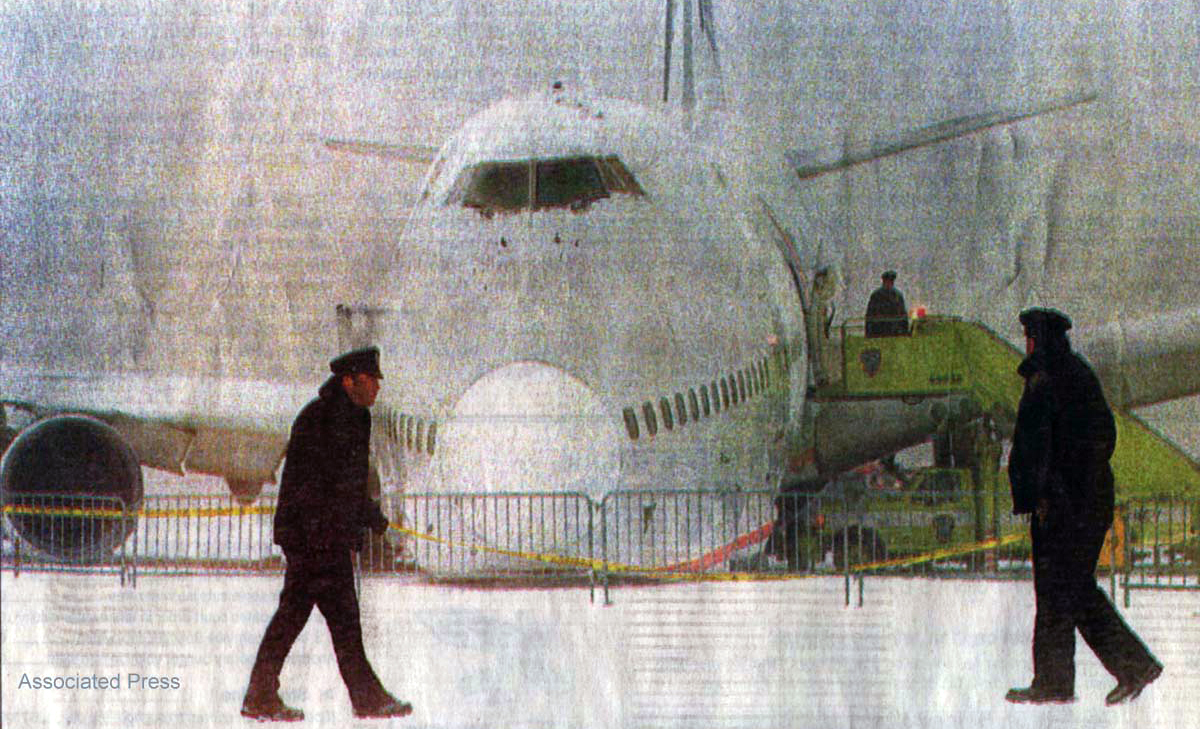
Crash of a Piper PA-31-350 Navajo Chieftain off New York: 1 killed
Date & Time:
Oct 18, 1995 at 2055 LT
Registration:
N711EX
Survivors:
Yes
Schedule:
Atlantic City – Farmingdale
MSN:
31-7952075
YOM:
1979
Crew on board:
2
Crew fatalities:
Pax on board:
4
Pax fatalities:
Other fatalities:
Total fatalities:
1
Captain / Total hours on type:
425.00
Aircraft flight hours:
7335
Circumstances:
While descending from 5,000 feet to 3,000 feet, the pilot informed ATC that the left engine had failed and the engine cowling was open. The crew said that after feathering the left propeller, and with the right engine at full power, they could not arrest a 300-500 fpm rate of descent. The crew informed ATC that they would be landing in the water. All the occupants exited the airplane from the left front pilot's emergency door. The victims were in the water for approximately 30 minutes before being rescued. One of the passengers was in cardiac arrest when he was retrieved from the water. Examination of the left engine revealed that the #2 cylinder had separated from the engine in flight as a result of high stress fatigue cracking of the cylinder hold down studs and the #3 main bearing thru-studs. The fatigue in the studs occurred as a result of the cylinder fastener preload forces either initially inadequate or lost during service. Maintenance records indicated that the thru-stud was replaced 80 service hours prior to the accident. Examination of the cylinder hold down studs and the #3 main bearing thru-studs revealed that they were improperly torqued, resulting in low initial preload on the fasteners. Incorrect installation of the oversize thru-studs, per existing service information, could have also been a factor in the improper torquing of the studs. The locations of the fatigue origins and the edge worn into the deck indicate that the upper studs were probably the first to fail, allowing the cylinder to rock on the lower rear corner of the cylinder flange.
Probable cause:
A total loss of left engine power as a result of an in-flight separation of the #2 cylinder. The cylinder separated due to high stress fatigue cracking of the cylinder hold down studs and the #3 main bearing thru-studs. Factors in this accident were: improper torquing of the studs and failure of maintenance personnel to properly comply with service information.
Final Report:
Crash of a Lockheed L-1011-385-1 TriStar 1 in New York
Date & Time:
Jul 30, 1992 at 1741 LT
Registration:
N11002
Survivors:
Yes
Schedule:
New York - San Francisco
MSN:
193B-1014
YOM:
1972
Flight number:
TW843
Crew on board:
12
Crew fatalities:
Pax on board:
280
Pax fatalities:
Other fatalities:
Total fatalities:
0
Captain / Total hours on type:
2397.00
Copilot / Total hours on type:
2953
Aircraft flight hours:
49662
Aircraft flight cycles:
19659
Circumstances:
Immediately after liftoff the stick shaker activated, and the first officer, who was making the takeoff, said 'you got it.' The captain took control, closed the thrust levers, and landed. He applied full reverse thrust and maximum braking, and turned the airplane off the runway to avoid a barrier at the end. A system design deficiency permitted a malfunctioning aoa sensor to cause a false stall warning. The sensor had experienced 9 previous malfunctions, and was inspected and returned to service without a determination on the reason for the intermittent malfunction. The first officer had incorrectly perceived that the airplane was stalling and gave control to the captain without proper coordination of the transfer of control. All 292 occupants were rescued, among them 10 were injured, one seriously.
Probable cause:
Design deficiencies in the stall warning system that permitted a defect to go undetected, the failure of twa's maintenance program to correct a repetitive malfunction of the stall warning system, and inadequate crew coordination between the captain and first officer that resulted in their inappropriate response to a false stall warning.
Final Report:
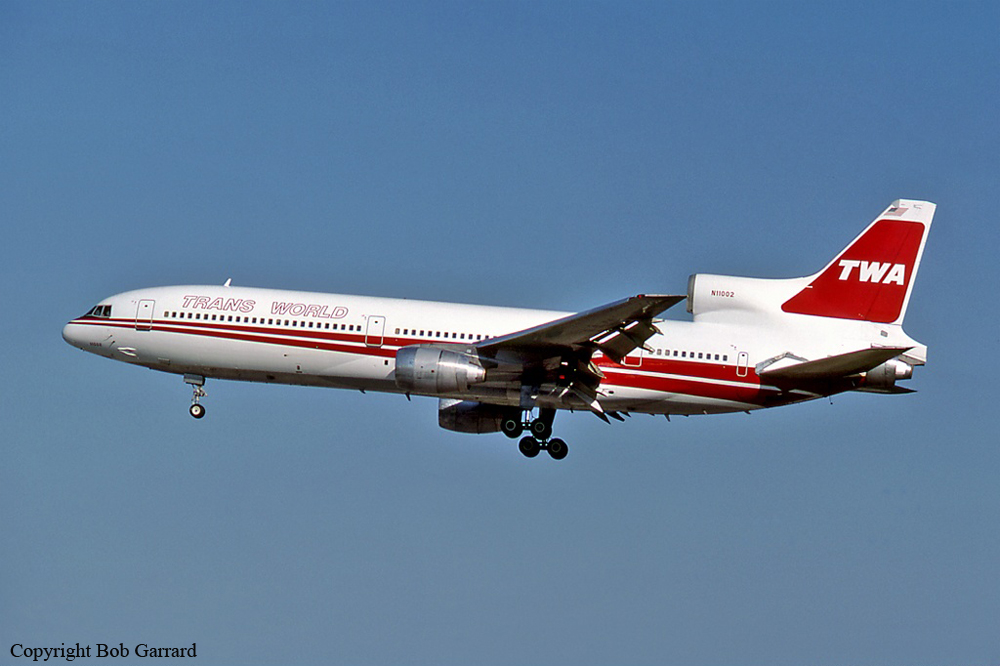

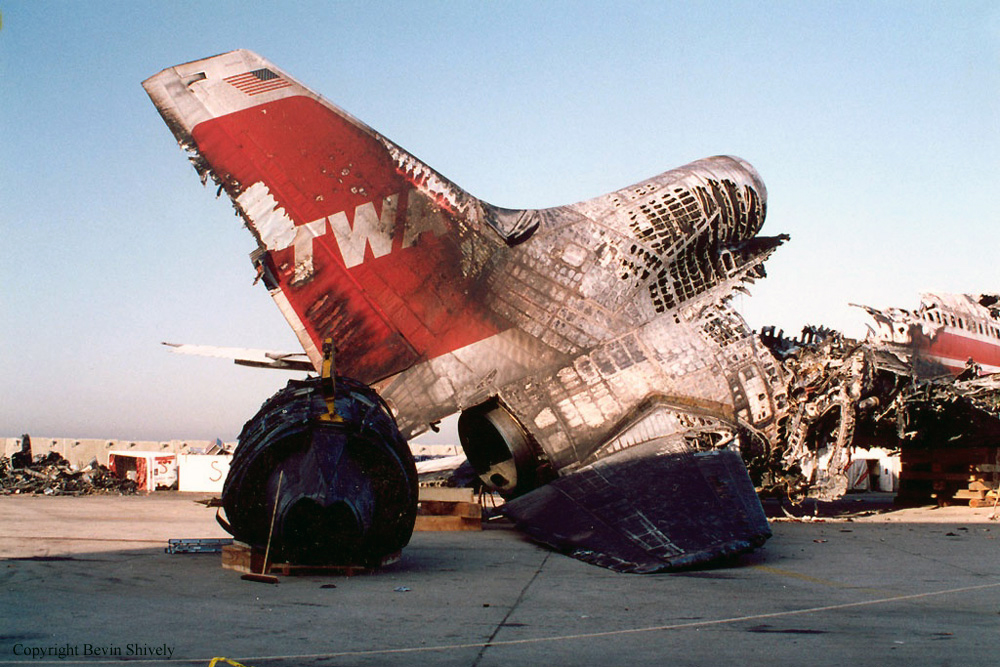

Crash of a Douglas DC-8-62F in New York
Date & Time:
Mar 12, 1991 at 0906 LT
Registration:
N730PL
Survivors:
Yes
Schedule:
New York - Brussels
MSN:
46161
YOM:
1971
Flight number:
8C102
Crew on board:
3
Crew fatalities:
Pax on board:
2
Pax fatalities:
Other fatalities:
Total fatalities:
0
Captain / Total hours on type:
3000.00
Aircraft flight hours:
50145
Circumstances:
Before flight, the flight engineer (f/e) had calculated 'v' speeds and horizontal stabilizer trim setting for takeoff, but neither the captain nor the 1st officer (f/o) had verified them. During rotation for takeoff, the captain noted that the forced needed to pull the yoke aft was greater than normal and that the aircraft would not fly (at that speed). Subsequently, he aborted the attempted takeoff. Realizing the aircraft would not stop on the remaining runway, he elected to steer it to the right to avoid hitting traffic on a highway near the departure end. The aircraft struck ILS equipment; the landing gear collapsed and all 4 engines tore away. Subsequently, the aircraft was destroyed by fire. Investigations revealed the f/e had improperly computed the takeoff data. He had calculated the 'v' speeds and horizontal stabilizer trim setting for 242,000 lbs; however, the actual takeoff wt was 342,000 lbs. Rotation speed (Vr) for this weight was 28 knots above the speed that was used. Investigations revealed shortcomings in the operator's flightcrew training program and questionable scheduling of qualified (but marginally experienced) crew members for the accident flight.
Probable cause:
Improper preflight planning/preparation, in that the flight engineer miscalculated (misjudged) the aircraft's gross weight by 100,000 lbs and provided the captain with improper takeoff speeds; and improper supervision by the captain. Factors related to the accident were: improper trim setting provided to the captain by the flight engineer, inadequate monitoring of the performance data by the first officer, and the company management's inadequate surveillance of the operation.
Final Report:
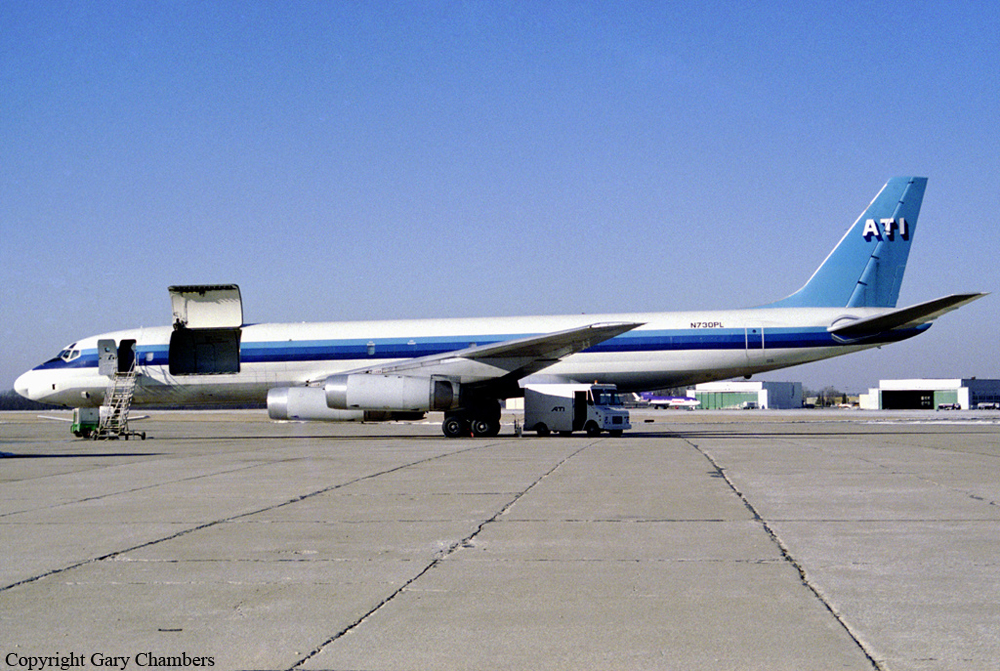
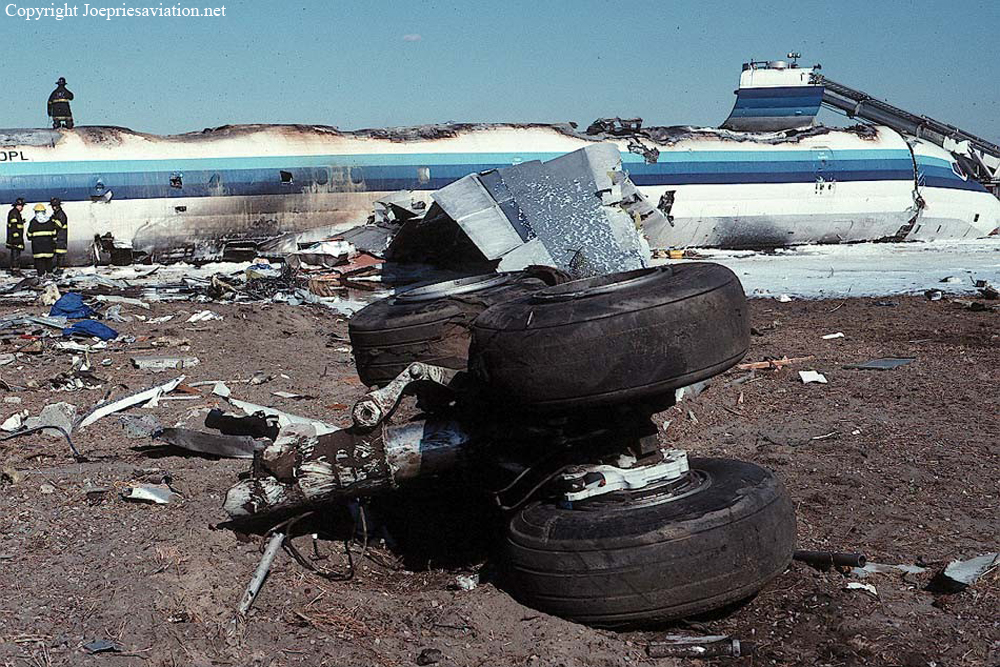
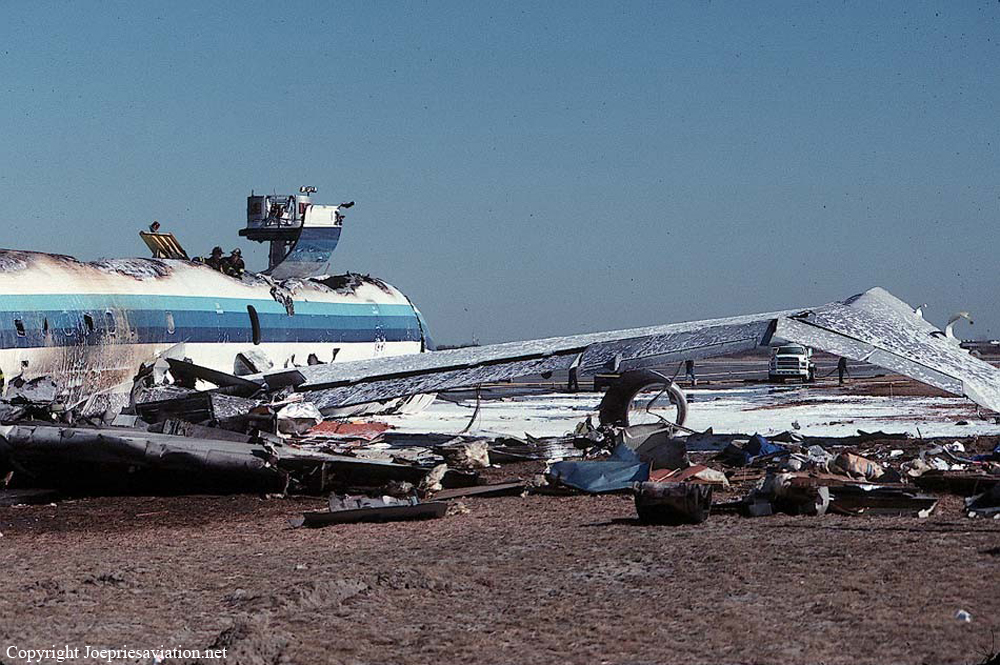

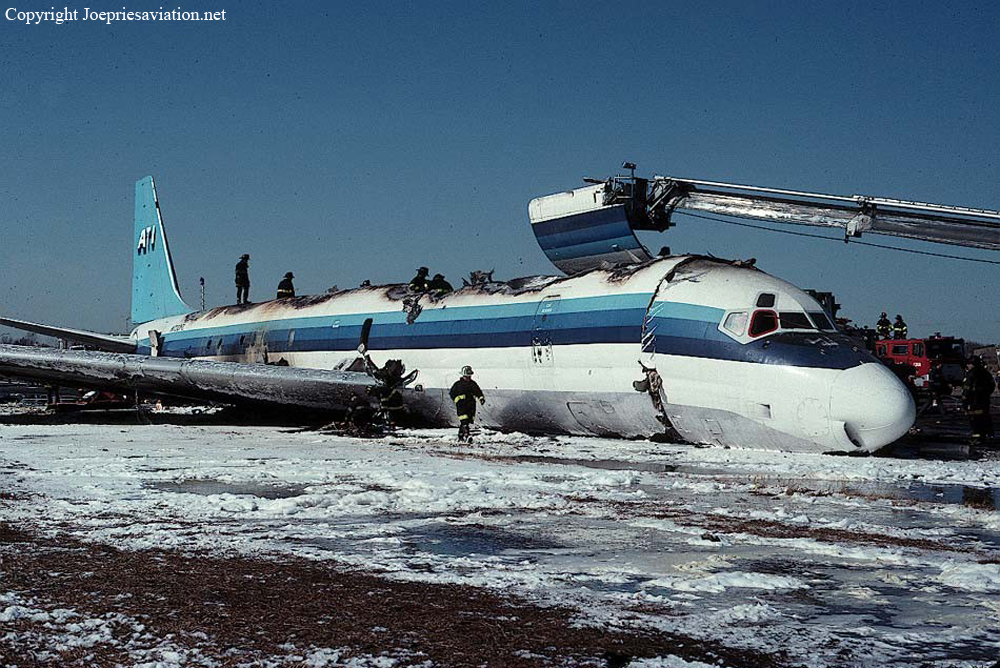

Crash of a Boeing 707-321B in Cove Neck: 73 killed
Date & Time:
Jan 25, 1990 at 2134 LT
Registration:
HK-2016
Survivors:
Yes
Schedule:
Bogotá – Medellín – New York
MSN:
19276/592
YOM:
1967
Flight number:
AV052
Crew on board:
9
Crew fatalities:
Pax on board:
149
Pax fatalities:
Other fatalities:
Total fatalities:
73
Captain / Total hours on type:
1534.00
Copilot / Total hours on type:
64
Aircraft flight hours:
61764
Circumstances:
Avianca flight 052 (AV052), a Boeing 707-321B with Colombian registration HK-2016, crashed in a wooded residential area in Cove Neck, Long Island, NY. AV052 was a scheduled international passenger flight from Bogotá, Colombia, to New York-JFK Intl Airport, NY, with an intermediate stop at Jose Maria Cordova Airport, near Medellín, Columbia. Of the 158 persons aboard, 73 were fatally injured. Because of poor weather conditions in the northeastern part of the United States, the flightcrew was placed in holding 3 times by ATC for a total of about 1 hour and 17 minutes. During the 3rd period of holding, the flightcrew reported that the aircraft could not hold longer than 5 minutes, that it was running out of fuel, and that it could not reach its alternate airport, Boston-Logan Intl. Subsequently, the flightcrew executed a missed approach to JFK Intl Airport. While trying to return to the airport, the aircraft experienced a loss of power to all 4 engines and crashed approximately 21 miles northeast of JFK Airport.
Probable cause:
The failure of the flightcrew to adequately manage the airplane's fuel load, and their failure to communicate an emergency fuel situation to air traffic control before fuel exhaustion occurred. Contributing to the accident was the flightcrew's failure to use an airline operational control dispatch system to assist them during the international flight into a high-density airport in poor weather. Also contributing to the accident was inadequate traffic flow management by the faa and the lack of standardized understandable terminology for pilots and controllers for minimum and emergency fuel states. The safety board also determines that windshear, crew fatigue and stress were factors that led to the unsuccessful completion of the first approach and thus contributed to the accident.
Final Report:

